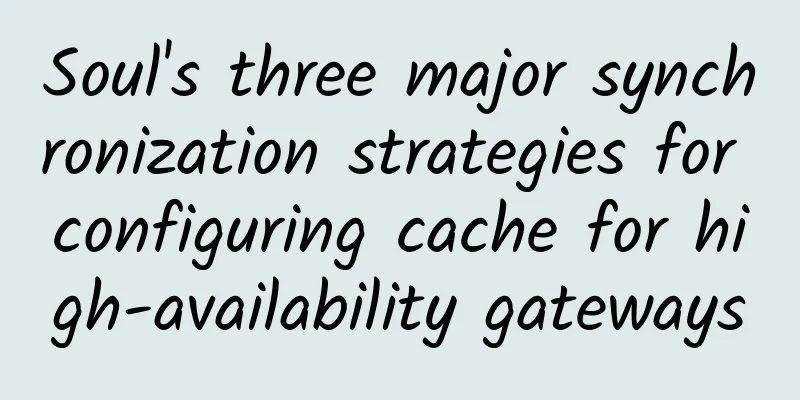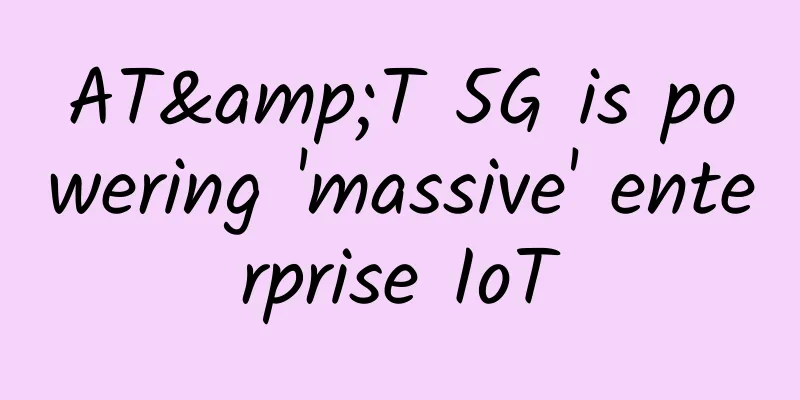Soul's three major synchronization strategies for configuring cache for high-availability gateways

|
Preface The gateway is the entrance for traffic requests and plays a very important role in the microservice architecture. The importance of high availability of the gateway is self-evident. In the process of using the gateway, in order to meet business demands, it is often necessary to change the configuration, such as flow control rules, routing rules, etc. Therefore, the dynamic configuration of the gateway is an important factor in ensuring the high availability of the gateway. So, how does Soul Gateway support dynamic configuration?
Those who have used Soul know that all Soul plugins are hot-swappable, and all plugin selectors and rules are dynamically configured and take effect immediately without restarting the service. However, in the process of using Soul Gateway, users also reported a lot of problems.
Therefore, we partially refactored Soul and released version 2.0 after two months of iteration.
1.Some people may ask me why I don’t use the configuration center for configuration synchronization? Answer: First of all, introducing a configuration center will add a lot of extra costs, both in terms of operation and maintenance, and will make Soul very heavy; in addition, when using a configuration center, the data format is uncontrollable, which is not convenient for soul-admin to perform configuration management. 2. Some people may ask? Dynamic configuration update? Isn't it enough for me to check the database or redis every time? What I get is the latest one, why so much trouble? A: Soul is a gateway. In order to provide a higher response speed, all configurations are cached in the JVM's Map. Each request goes through the local cache, which is very fast. So this article can also be understood as three ways of memory synchronization in a distributed environment. Principle Analysis First, here is a high-definition, uncensored picture. The picture below shows the Soul data synchronization process. When the Soul gateway is started, it will synchronize configuration data from the configuration service, and support push-pull mode to obtain configuration change information and update the local cache. The administrator changes the user, rule, plug-in, and traffic configuration in the management background, and synchronizes the change information to the Soul gateway through push-pull mode. Whether it is push mode or pull mode depends on the configuration. Regarding the configuration synchronization module, it is actually a simplified configuration center. In version 1.x, the configuration service relies on zookeeper, and the management backend pushes the change information to the gateway. Version 2.x supports webosocket, http, and zookeeper, and specifies the corresponding synchronization strategy through soul.sync.strategy. The default http long polling synchronization strategy can achieve data synchronization in seconds. However, one thing to note is that soul-web and soul-admin must use the same synchronization mechanism.
If it is an http synchronization strategy, soul-web actively initiates a long polling request with a default timeout of 90 seconds. If soul-admin has no data changes, it will block the http request. If there is a data change, it will respond with the changed data information. If there is still no data change after more than 60 seconds, it will respond with empty data. After receiving the response, the gateway layer will continue to initiate http requests and repeat the same request. Zookeeper synchronization The synchronization principle based on zookeeper is very simple, mainly relying on the watch mechanism of zookeeper. soul-web will monitor the configured nodes. When soul-admin starts, it will write all the data to zookeeper. When the subsequent data changes, the zookeeper nodes will be incrementally updated. At the same time, soul-web will monitor the nodes of the configuration information, and once there is a change in information, it will update the local cache. Soul writes configuration information to the Zookeeper node through careful design. websocket synchronization The websocket and zookeeper mechanisms are somewhat similar. When the gateway establishes a websocket connection with the admin, the admin will push the full data once. If the configuration data changes later, the incremental data will be actively pushed to soul-web through the websocket. When using websocket synchronization, pay special attention to disconnection and reconnection, also known as heartbeat. Soul uses the third-party library java-websocket to perform websocket connections.
http long polling The data synchronization mechanism of zookeeper and websocket is relatively simple, while http synchronization is relatively complicated. Soul draws on the design ideas of Apollo and Nacos, extracts the essence, and implements the http long polling data synchronization function. Note that this is not the traditional ajax long polling! As shown above, the soul-web gateway requests the admin's configuration service, and the read timeout is 90s, which means that the gateway layer will wait for up to 90s to request the configuration service. This makes it easier for the admin configuration service to respond to the changed data in a timely manner, thereby achieving quasi-real-time push. After the http request reaches sou-admin, it does not respond to data immediately, but uses the asynchronous mechanism of Servlet3.0 to respond to data asynchronously. First, the long polling request task LongPollingClient is thrown into the BlocingQueue, and the scheduling task is started and executed after 60 seconds. The purpose of this is to remove the long polling request from the queue after 60 seconds, even if there is no configuration data change during this period. Because even if there is no configuration change, the gateway must be informed, and it cannot be left waiting. In addition, there is a 90s timeout when the gateway requests the configuration service.
If the administrator changes the configuration data during this period, the long polling requests in the queue will be removed one by one, and the response data will be sent to inform which Group's data has changed (we divide plug-ins, rules, traffic configuration, and user configuration data into different groups). After receiving the response information, the gateway only knows which Group has changed the configuration, and needs to request the configuration data of the Group again. Some people may ask, why not write out the changed data directly? We also discussed this issue in depth during development, because the http long polling mechanism can only guarantee quasi-real time. If the gateway layer is not processed in time, or the administrator frequently updates the configuration, it is very likely that a configuration change will be missed. For safety reasons, we only inform a certain Group that the information has changed.
When the soul-web gateway layer receives the http response information, it pulls the change information (if there is any change), and then requests the soul-admin configuration service again, and repeats the cycle. Quick Use
Warehouse Address github: https://github.com/Dromara/soul gitee: https://gitee.com/shuaiqiyu/soul |
<<: 10 hottest enterprise networking startups in 2019
Recommend
Jack Ma: Who you will be in 18 years is decided today
[51CTO.com original article] The World Internet o...
What are the deployments and arrangements for 5G in 2022? MIIT responds
On January 20, the State Council Information Offi...
Accelerating the development of edge computing
5G is being rolled out faster than any previous g...
RongCloud's Yang Pan: Empowering Enterprises to Communicate
[51CTO.com original article] As an indispensable ...
After the cold winter, we are welcoming the spring: the operating data of the three major operators rose collectively in March
With the orderly resumption of production and wor...
RackNerd adds new Seattle data center, 1GB memory package costs $11.95 per year
In the middle of last month, we shared the news t...
Network-oriented, NPMD achieves 80% of functions with 20% of investment
An organization once worked with MIT to interview...
How 5G will impact data centers and how to prepare
New 5G networks are increasing connectivity betwe...
Results announced! Ruishu Information won the grand prize of "2021 Cybersecurity Outstanding Innovation Achievement Competition"
After the Nanjing Station in August and the Beiji...
DMIT's new San Jose data center starts at $36.9/year, 15% off + free data
DMIT.io opened a new data center in San Jose, USA...
Distributed Fiber Optic Sensors Global Market Report 2023
The global distributed fiber optic sensor market ...
Mobile phone roaming has finally become history, what about IoT roaming?
As early as this year's "Two Sessions&qu...
The number of users is not increasing, the time spent is declining, and 5G applications are delayed. Can we only wait for the flowers to bloom in 2021?
[[397144]] After many twists and turns, the numbe...
The explosion of the Internet of Things has forced the advancement of edge computing
According to research firm IDC, spending on the I...
How to fight the emergency communication battle in the “golden 72 hours”?
Life is the most important thing, and unity is st...









